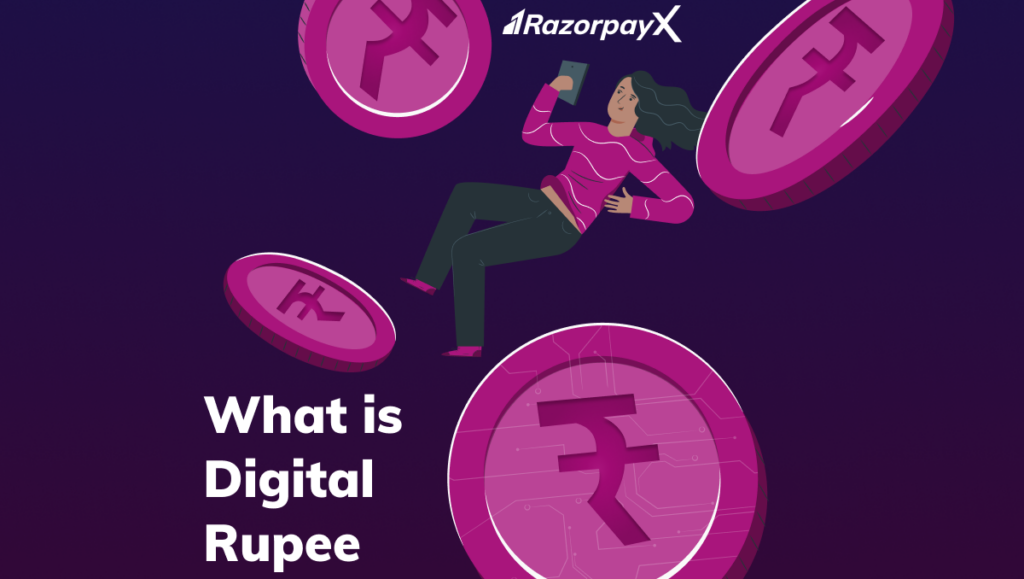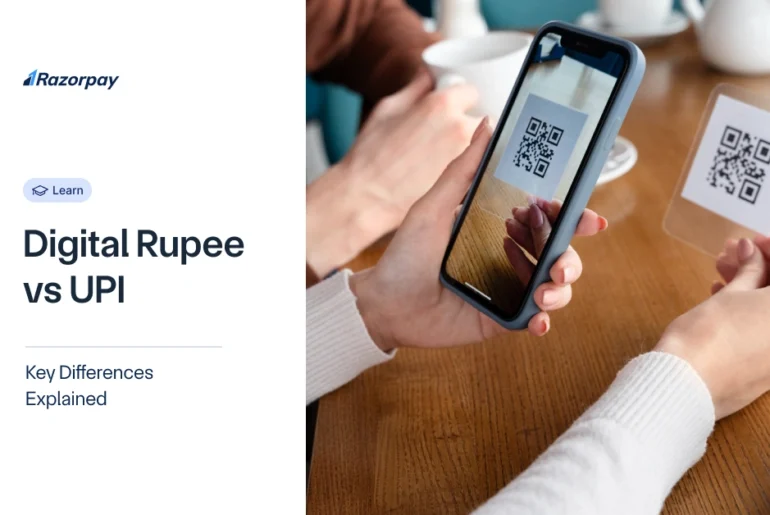Table of Contents
Understanding the Impact of the Digital Rupee
This year, the RBI spent ₹4,984 crores on printing money – not including the environmental costs of printing, storing, and transporting the physical cash.
Crazy?
The RBI agrees. Earlier this year, when finance minister Nirmala Sitharaman presented the budget for the year, we were introduced to the concept of the Digital Rupee or the e₹.
She said – “Introduction of Central Bank Digital Currency (CBDC) will give a big boost to the digital economy.” and that the RBI planned on introducing it to the public this year.
On the 1st of November, the pilot of the Digital Rupee was officially introduced to the world. Nine Indian banks were selected to take part in this pilot.
Since the Digital Rupee has not yet been officially released for public use, the impact of this digital currency is, at this stage, entirely speculative in nature.
In this blog, we will think about the potential implications of the digital Rupee on individuals, businesses, and the Indian economy as a whole.
If you’re looking for a basic understanding of the mechanisms and use of the digital Rupee, click here for the first part of this blog series.
Impact of the Digital Rupee on the Indian economy
Cryptocurrency in India has always been very strictly regulated, if not banned completely. The RBI has always remained firmly against the use of “private virtual currencies” like Bitcoin or Ethereum.
The reason for this is simple: cryptocurrency cannot be regulated.
The RBI cannot control how much Bitcoin is being sent from whom to where – this leaves room for shadow economies and illegal back-market transactions.
But cryptocurrency has undeniable benefits over physical cash – benefits that the RBI wants to make the most of, especially in today’s economy, where digital payments are becoming more popular.
The introduction of digital currency into the economy brings all the benefits of cryptocurrency while also maintaining the safety net of regulated, legal tender.
The RBI intends for the digital rupee to be as non-disruptive as possible. It is meant to supplement existing physical cash and not replace it.
The aim is that digital currency would, hopefully, reduce dependence on physical cash. The economy as a whole would gravitate toward digital payments and currency – resulting in reduced costs of printing, storage, and transportation of physical cash.
Using digital currency also requires financial and technological knowledge. While we are getting better with technology – digital payments rose 55% in the last five years… there is a lot of space for improvement.
Access to the internet and financial knowledge is lacking in India, but the implementation of the digital Rupee is good motivation for people to start learning about cryptocurrency, financial management, and the internet.
Impact of the Digital Rupee on Indian businesses
e₹ is currently in its pilot stage. 9 Indian banks have been chosen to participate in this pilot project. The intent is to use e₹ in settling inter-bank transactions.
The retail segment of the e₹ is set to be launched next month, and this retail segment will be of interest to businesses. The retail e₹ will roll out in select locations, to select merchants and customers, since it is still a pilot.
Most (if not all) business transactions happen online. India saw 20.57 online transactions in just the second quarter of this year (April-June). This growth led payments giant Visa to see potential in the B2B space by exploring long-term partnerships with fintech in India.
There are many reasons why businesses prefer transacting digitally over using cash. The risk of cash transactions to businesses includes:
- Cash being torn or damaged
- Cash being stolen
- Susceptibility of errors in accounting
- Prone to fraud and money laundering
These risks are negated with the introduction of the Digital Rupee.
Digital currencies cannot be torn or damaged, since they exist online.
Cryptocurrencies are the most secure forms of payment in the world – hacking into a blockchain network requires quantum computing, and the RBI has ensured protection against even that. Even if digital currency is stolen, it is possible to trace and identify the hack.
Since cash moves from one party to another so many times, keeping track of its movement has to be done manually. Even if a business uses digital accounting software, the entry has to be done manually. With manual entry comes errors, and errors in accounting can cause serious financial issues to the business.
Digital payments do away with this risk since all records are maintained automatically. Fintech solutions like RazorpayX even have integrations with accounting software like Tally and Zohobooks – as you make transactions for your business, whether it is payroll, vendor payments, or even payouts, it gets recorded automatically in your books of accounts! This same system would work seamlessly for the digital Rupee.
For the same reason, the possibility of fraud and money laundering is also close to zero with the digital Rupee.
Digital currencies also reduce settlement risk to nearly zero.
Settlement risk is the risk that arises when payments are not exchanged simultaneously. With digital currency, transactions happen practically in real-time, even when they are done online.
Another bright silver lining for businesses with the introduction of the Digital Rupee is the potential for innovation.
Currently, the RBI plans on introducing e₹ using the indirect route.
The liability for the currency will lie with the central bank, but the distribution for retail purposes will be undertaken by private parties. Just as BHIM infrastructure led to the rise of various platforms like PhonePe, Google Pay, and others, the e₹ is bound to bring the same kind of innovation.
Under this indirect route, people will hold their digital Rupees in a digital wallet which would look something like a PayTM wallet. Similar to banks holding people’s physical cash reserves, these digital wallets would hold digital cash reserves and would be liable for the maintenance and provision of this digital currency.
The adoption of e₹ across the retail space is expected to be smooth. Businesses will have to innovate and prepare themselves to adopt the Digital Rupee, meaning you can expect to see an “e₹” option next to the UPI option on your regular payment gateway, such as Razorpay – the best payment gateway in India.
Impact of the Digital Rupee on individuals
Since the RBI intends for the Digital Rupee to be a non-disruptive introduction to the existing financial ecosystem, the impact on the individual consumer is likely to be small.
The biggest benefit for individual consumers is that they may enjoy another mode of payment for the goods and services they purchase. Just like UPI, NEFT, or Online Banking, the Digital Rupee is going to be another gear in the payments machine.
The distribution of the Digital Rupee, as previously discussed, is likely to be through digital wallets. People may be able to request a part of their salary in the form of the digital rupee, or request for conversion of physical cash into digital cash – the mechanisms are still unknown since the entire project is just in its pilot stages.
Related Read: Digital Rupee vs UPI: Understanding the Key Differences
Conclusion
The Digital Rupee is highly promising to all dimensions of Indian society, as we just saw.
Once the Digital Rupee becomes part of mainstream society, it is likely that existing digital and neobanks would have an advantage since they already have the necessary digital infrastructure.
Businesses that use fintech-powered solutions, or digital banks would have an advantage over those who use purely physical forms of money.
Just as Netflix innovated to accommodate the rise of online video streaming, your business must, too.
At RazorpayX, we’ve innovated business banking so you don’t have to. Move your finances over to RazorpayX, and feel the difference!
FAQs
Why was Digital Rupee introduced?
Digital Rupee was introduced so that the Indian economy could take advantage of the benefits of digital currencies, while also ensuring that its use is regulated.
Will Digital Rupee replace physical cash?
The RBI introduced Digital Rupee to supplement existing physical cash, and not replace it. The aim is to reduce dependence on physical cash.
Will Digital Rupee benefit the economy?
By reducing dependence on physical cash, the RBI expects to save thousands of crores of rupees that was previously spent on printing and maintaining physical cash. Apart from this, Digital Rupee will also help in the digital transformation of India for all industries.
Will Digital Rupee benefit businesses?
Businesses face the risk of losses due to damage or theft of physical currency - a problem that can be solved with digital currency. Further, the issue of settlement risk is almost zero with the Digital Rupee.



